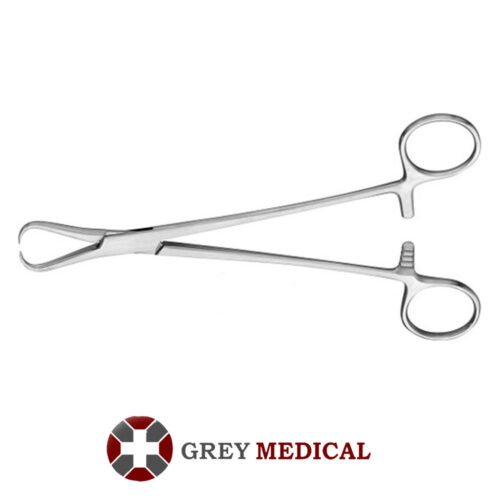In surgical procedures, precision and control are paramount. Among the many instruments used in the operating room, the Lahey clamp is a standout tool known for its versatility and reliability. Designed to grasp, hold, and manipulate tissues, the Lahey clamp is widely used across various surgical specialties, particularly in thyroid and general surgeries.
What is a Lahey Clamp?
A Lahey clamp, also known as a Lahey thyroid tenaculum, is a surgical instrument designed to securely grasp and hold tissues during procedures. It features:
- Sharp, pointed tips for a firm grip on tissues.
- Long handles to provide control and ease of maneuverability.
- Ratchet mechanism to lock the clamp in place, freeing the surgeon’s hands for other tasks.
These clamps are typically made of high-grade stainless steel to ensure durability, sterilizability, and resistance to corrosion.
Key Features of Lahey Clamps
Lahey clamps are specifically designed to meet the demands of precision and control in surgery:
a. Sharp Prongs
The sharp prongs at the tips ensure a secure grip on tissues, minimizing slippage during manipulation. This is particularly important in delicate procedures like thyroid surgery.
b. Lightweight Design
Despite their sturdy build, Lahey clamps are lightweight, making them easy to handle and reducing hand fatigue during long surgeries.
c. Ergonomic Handles
The ergonomic design ensures a comfortable grip, allowing surgeons to maintain precise control over the instrument.
d. Locking Mechanism
The ratchet lock provides stability, enabling the clamp to hold tissues securely without requiring constant pressure from the surgeon’s hand.
Common Applications of Lahey Clamps
Lahey clamps are versatile and find applications in various surgical procedures:
a. Thyroid Surgery
In thyroidectomy procedures, Lahey clamps are used to hold and manipulate the thyroid gland. Their sharp prongs provide a secure grip, ensuring precise tissue handling during the delicate removal of the gland.
b. General Surgery
Lahey clamps are also used in general surgeries to hold and manipulate soft tissues, aiding in dissections and suturing.
c. Tumor Excision
During tumor removal, Lahey clamps assist in holding the affected tissue firmly, ensuring clean and precise excision.
d. Obstetrics and Gynecology
In gynecological procedures, Lahey clamps may be used to stabilize and manipulate tissues, particularly in uterine or ovarian surgeries.
Advantages of Using Lahey Clamps
Lahey clamps are preferred by surgeons for several reasons:
a. Secure Tissue Grip
The sharp prongs and locking mechanism ensure tissues are held firmly, minimizing the risk of accidental slippage.
b. Enhanced Surgical Precision
By providing a stable hold on tissues, Lahey clamps allow surgeons to perform more precise and controlled maneuvers.
c. Versatility
Their ability to handle various tissue types makes them a valuable tool across multiple surgical disciplines.
d. Reusability
Made of durable stainless steel, Lahey clamps can be sterilized and reused, making them a cost-effective choice for healthcare facilities.
Best Practices for Using Lahey Clamps
To ensure the effective and safe use of Lahey clamps, surgeons and surgical teams should adhere to the following practices:
a. Proper Sterilization
After each use, Lahey clamps must be thoroughly cleaned and sterilized to prevent infections. Autoclaving is the most common method for sterilization.
b. Inspection for Wear and Tear
Regular inspection is essential to identify any signs of damage, such as dull prongs or loose ratchet mechanisms, which could compromise the clamp's performance.
c. Appropriate Use
Lahey clamps should only be used for their intended purpose to avoid damage to the instrument or tissues.
d. Training and Familiarity
Surgeons and operating room staff should be well-trained in handling Lahey clamps to maximize their efficiency and safety during procedures.
Alternatives to Lahey Clamps
While Lahey clamps are highly effective, other instruments may be used for similar purposes, depending on the procedure:
- Allis Clamps: For gentle tissue handling, particularly in bowel or gynecological surgeries.
- Kocher Clamps: For gripping tissues with more tensile strength.
- Babcock Clamps: For delicate tissues like intestines or fallopian tubes.
Each of these instruments has unique features suited to specific surgical needs.
Innovations and Modern Variants
Advancements in surgical instrument design have led to improved versions of the traditional Lahey clamp. Some modern variants include:
- Disposable Lahey Clamps: Single-use options for minimizing cross-contamination.
- Titanium Clamps: Lightweight and non-magnetic, ideal for surgeries requiring imaging guidance.
- Customizable Clamps: Instruments tailored for specific procedures or surgeon preferences.
The Role of Lahey Clamps in Patient Outcomes
The use of high-quality surgical instruments like Lahey clamps directly impacts patient outcomes. By enabling precise tissue handling, these clamps:
- Reduce the risk of tissue damage.
- Minimize surgical complications.
- Contribute to shorter procedure times.
The result is improved safety and satisfaction for both patients and surgical teams.
Conclusion
The Lahey clamp is a cornerstone instrument in surgical practice, offering unparalleled reliability and precision. Its applications across various procedures, particularly in thyroid and general surgeries, make it an indispensable tool in the operating room. By ensuring proper handling, maintenance, and sterilization, healthcare professionals can maximize the efficiency and longevity of this essential instrument.





Comments